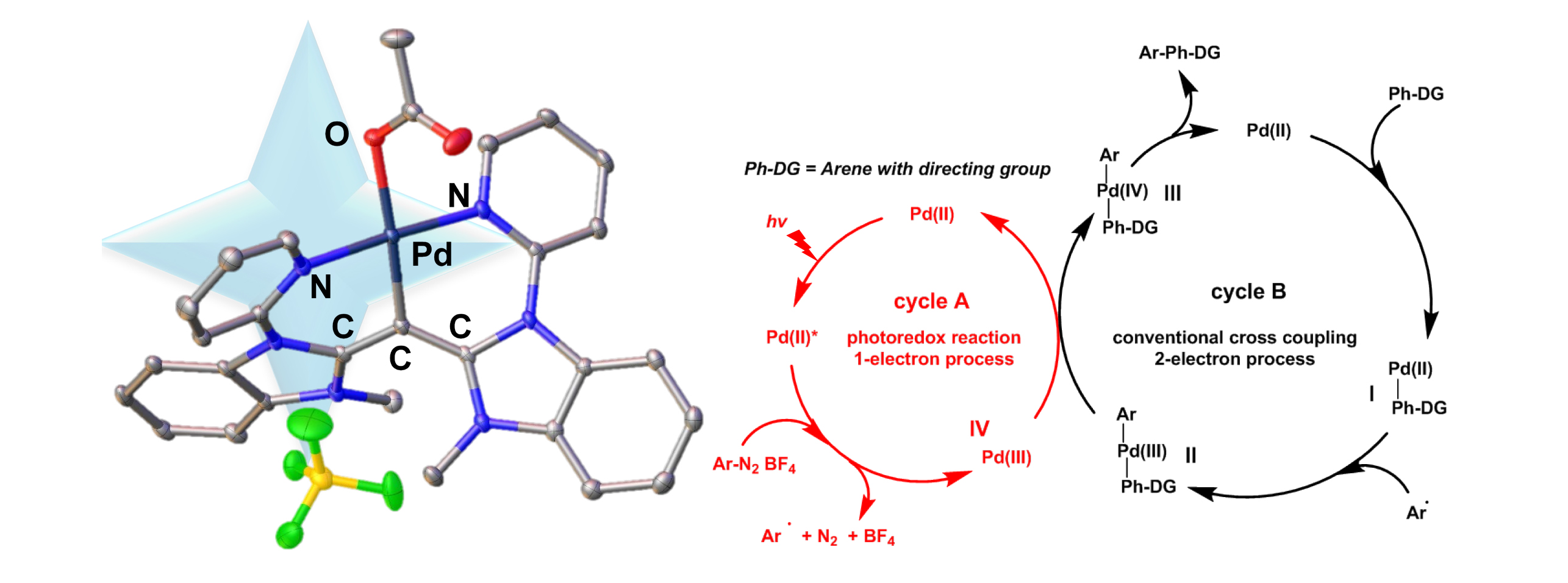Institute of Chemistry, Academia Sinica – Research
一鍋化串聯光氧化還原與交叉偶聯催化反應
One-Pot Tandem Photoredox and Cross-Coupling Catalysis with a Single Palladium Carbodicarbene ComplexAngew. Chem., Int. Ed. 2018, 57, 4622-4626. Yu-Cheng Hsu, Vincent C.-C. Wang,* Ka-Chun Au-Yeung, Chung-Yu Tsai, Chun-Chi Chang, Bo-Chao Lin, Yi-Tsu Chan, Chao-Ping Hsu, Glenn P. A. Yap, Titel Jurca,* and Tiow-Gan Ong*
結合傳統的過渡金屬催化偶聯(2e-過程)和光氧化還原催化(1e-過程),已經成為在溫和反應條件下難以催化的交叉偶聯反應之有效方法。本篇報導首次將鈀-同碳雙碳烯(CDC)錯合物應用於Suzuki-Miyaura偶聯和光氧化還原催化反應中,以可見光照射使之形成C-N鍵,即可直接串聯過渡金屬催化偶聯和光氧化還原催化兩種反應途徑,此即利用單一催化劑促進常溫條件下的一鍋化C-H芳基化反應。
The combination of conventional transition-metal-catalyzed coupling (2e- process) and photoredox catalysis (1e- process) has emerged as a powerful approach to catalyze difficult cross-coupling reactions under mild reaction conditions. Reported is a palladium carbodicarbene (CDC) complex that mediates both a Suzuki-Miyaura coupling and photoredox catalysis for C-N bond formation upon visible-light irradiation. These two catalytic pathways can be combined to promote both conventional transition-metal-catalyzed coupling and photoredox catalysis to mediate C-H arylation under ambient conditions with a single catalyst in an efficient one-pot process.

